




Captain Bird’s Shoulder Patch
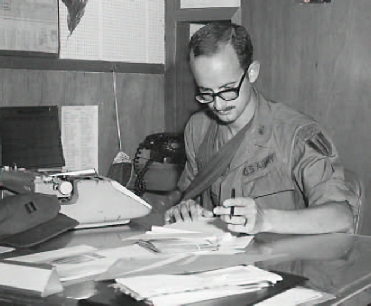

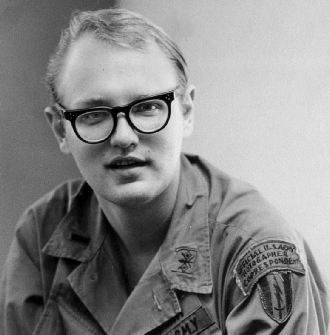
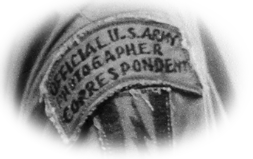

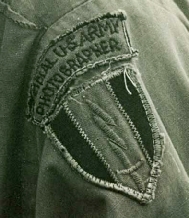


I got this story from Evan Mower. He got it from Captain Jon Bird, a man who can take a joke.
Evan said “Until he sent me the story, I never knew that had happened!”
I asked Evan “Ok. But who got Bird's patches made that way? .. Were you the culprit?”
Evan replied: “Guilty as charged! As I recall, I had at least 50 of them made, and passed them out or sold them at cost.”
Send me your story: pberk@berks.com


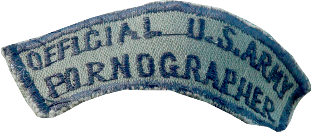
It was a dark and dreary night when Captain Jon P. Bird held a weekly staff meeting with his combat photographers. One major topic of discussion was whether or not the men of the 221st Signal Company (Pictorial) could have a patch on their uniform to represent their function. The patch would go on the shoulder above the unit patch and would be black letters on an olive drab background.
My job was to decide whether or not to have this patch say U.S. Army Official Photographer or Official U.S. Army Photographer. I think we even toyed with the idea of adding Correspondent to the tag, but ended up with Official U.S. Army Photographer. A week later, the patches were produced and then handed out. Hearing laughter from the rear of the room, I asked “What’s so funny?” The answer came, “Sir, we wondered if you would like one of our special patches?”
Well, there it was, Official U.S. Army Pornographer. Ha, ha, I thought, but then, black letters on an OD background, who would care or even know? I stuffed my five patches in my pocket for our hooch maid to sew on and promptly forgot about it. Little did I know . . .
The lab technicians surfaced another issue that required a solution. For the awards and departing dignitaries, we often provided color photos. While we had a machine that processed 8x10 color photos automatically for a very low cost, larger 11x14 photos had to be done manually. The cost was much more and the chemistry was injurious to our lab technician’s hands. So the goal was somehow to get the 1st Signal brigade to standardize on the 8x10 size.
My solution was to get a cherry picker crane and take photos of the 1st Sig Bde’s headquarters building with the flags flying and a nice blue sky with white clouds. We made 8x10 prints and then raising the enlarger, made 11x14 prints as well. The only difference between the prints, other than size, was that the 8x10 had much richer colors than the 11x14.
So, I set up an appointment to see the commanding general, MG Hugh Foster, through my friend, who was his adjutant. I got a haircut, put on my best uniform and boots and armed with my photo samples, some medical reports and my quick wit, I headed up to see the Big Man. I arrived a bit early and talked with my friend, before my time with the general. At the appointed moment, I knocked, walked in an saluted General Foster. He returned my salute and I proceeded with my plan. I told him my visit was two-fold, first to present him with photos of his headquarters that I had heard he wanted and next to relate this issue to a problem within the command. He was sitting down and I was standing in front of his desk. I gave him the 11x14 photo as a token of appreciation from the men of the 221st Sig Co. He was impressed with the quality, so then I gave him the 8x10, which was so much more colorful.
I explained to him the cost factors and the medical ramifications and laid down the medal reports, then asked him for a policy on the “grip and grin” photos. As he was looking at all of the paperwork, he looked up at me and gazed at my shoulder, saying “Captain Bird, that doesn’t say what I think it says, does it?” I looked at my shoulder patch and among the five uniforms that I had, I had selected the one that my hootch maid had sewed on the special patch that read Official US Army Pornographer. Looking the general straight in the eye and swallowing, I said “No sir, it doesn’t say that.” Well, my meeting was over and I went back to my unit. The policy was settled and I never again heard about the special patch.
- Captain Jon P. Bird, SEAPC